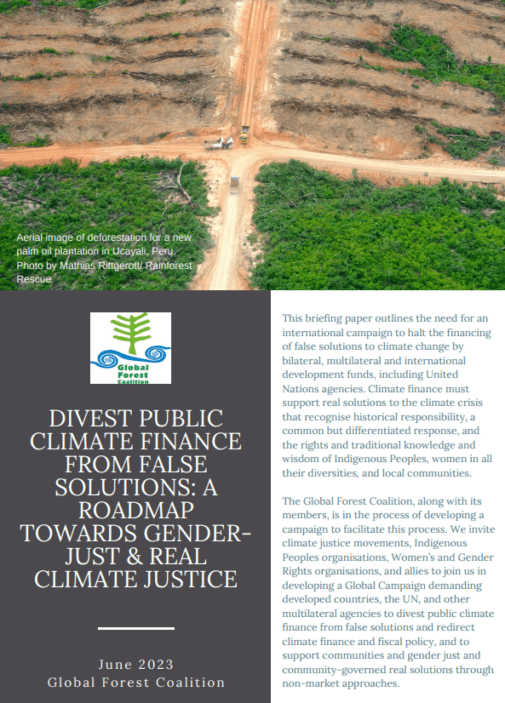European Tour on Woody Bioenergy
 In May and June 2010, GFC organizes a European tour on the impact of wood-based bioenergy on forests, forest dependant people and the climate. Bioenergy is expected to meet most of the EU’s 20% renewable energy target. Much of this will come from burning wood in dedicated power stations, co-firing with coal and domestic wood boilers. A growing proportion of the wood already does not come from true residues but from trees cut down for this purpose. Companies are increasingly looking for imports to meet the new demand. The European paper industry has already pointed out that there will be need to significantly increase wood imports if a large part of European wood is destined for bio-energy, and Mc Kinsey has calculated there will be a gap of 200 -250 million cubic meters between European wood production and demand if the current bio-energy targets are maintained.
In May and June 2010, GFC organizes a European tour on the impact of wood-based bioenergy on forests, forest dependant people and the climate. Bioenergy is expected to meet most of the EU’s 20% renewable energy target. Much of this will come from burning wood in dedicated power stations, co-firing with coal and domestic wood boilers. A growing proportion of the wood already does not come from true residues but from trees cut down for this purpose. Companies are increasingly looking for imports to meet the new demand. The European paper industry has already pointed out that there will be need to significantly increase wood imports if a large part of European wood is destined for bio-energy, and Mc Kinsey has calculated there will be a gap of 200 -250 million cubic meters between European wood production and demand if the current bio-energy targets are maintained.
Expansion of monoculture
This will significantly increase pressure upon forests and forest peoples in developing countries. It will also trigger the expansion of monoculture tree plantations, which are already causing significant social and ecological harm in many developing countries due to their negative impacts on biodiversity, water tables, and local communities. So far, most wood imports for bioenergy come from North America, where increased logging and the expansion of monoculture tree plantations have already caused significant social and environmental impacts. In the longer term, large-scale imports from the South are expected. Plans for the expansion of wood exports and monoculture tree plantationsfor bioenergy are already being developed in countries like West Papua, Guyana, Ghana and the Republic of Congo.
Demand for GE trees
If agrofuels from wood become commercially viable, the demand for wood will rise even further. It will also lead to further promotion of genetically engineered trees: GE trees grow faster and could more easily be turned into ethanol for transport fuel. The social and environmental consequences of these GE trees have not been independently assessed, and the impacts on forest dependent communities and on forest biodiversity could be quite severe. The social and environmental consequences of these GE trees have not been independently assessed, and the impacts on forest dependent communities and on forest biodiversity could be quite severe.
For dates and programmes, check: https://globalforestcoalition.org/paginas/view/244







